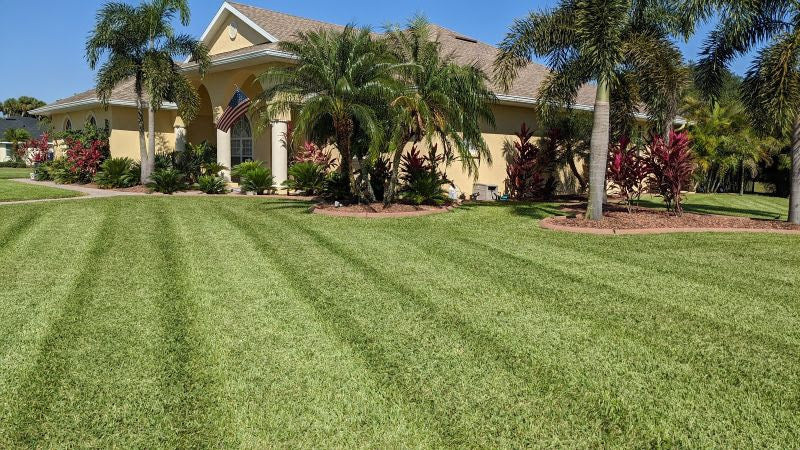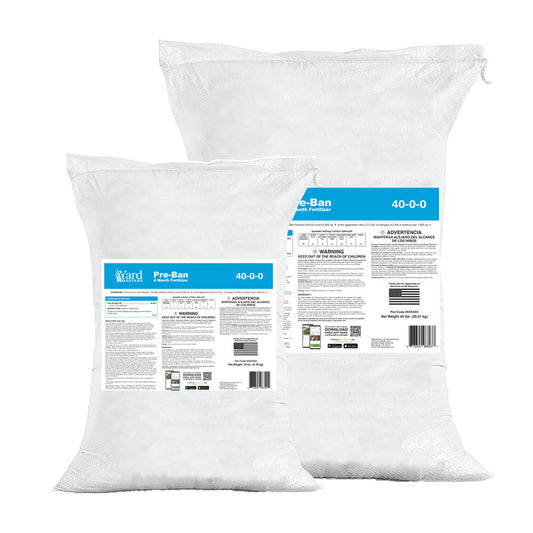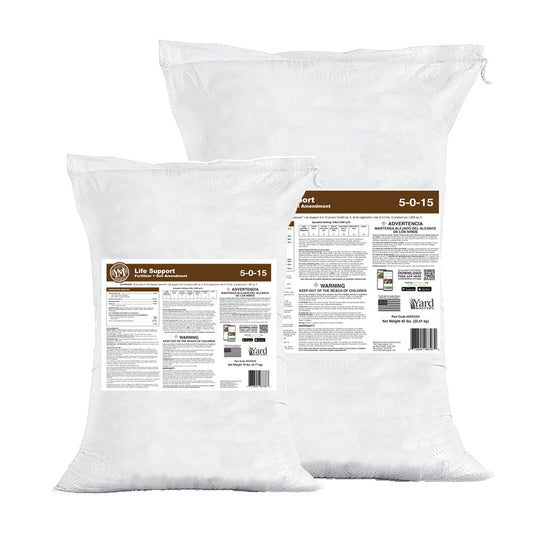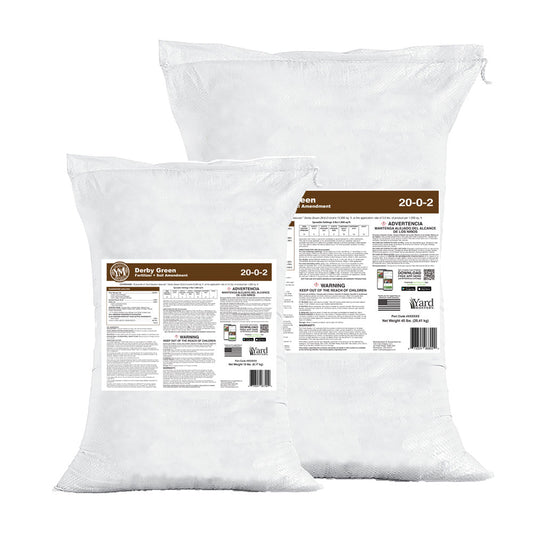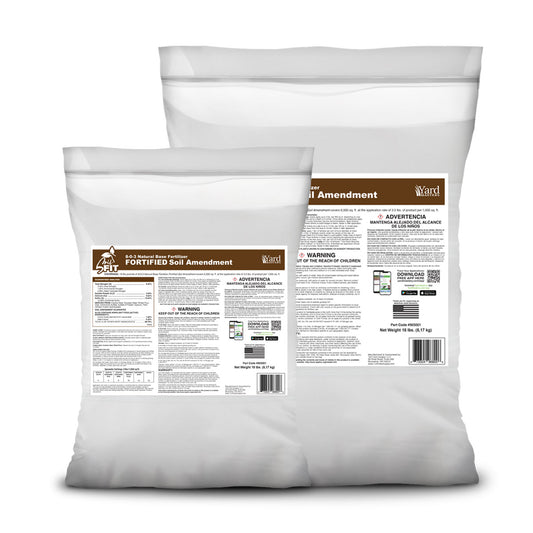You guys know I hammer on the importance of mowing often.
Besides watering, it’s the most important thing you, as a DIY Lawn Farmer, can do.
Difference is that with watering, we get a lot of help from natural rain but with mowing, it’s all on you, 100% of the time.
Mowing Frequency vs Mowing Height
As a general reminder, here are the recommended mowing heights for each grass type:
Kentucky Bluegrass: 3-4”
Perennial Ryegrass: 3-4”
Turf Type Tall Fescue: 4”+
St Augustine: 4”+
Centipede: 3”
Zoysia: 1-2”
Bermuda: 1-2”
If you are brand new to lawn care, and are just learning, you should absolutely mow your grass at the recommended heights here and stay within those boundaries.
It will make your life much easier.

But there is something that is even more important than just the mowing height, and that is the mowing frequency.
Remember, “The More You Mow, the Healthier it will Grow."
I often talk about the 1/3rd rule which states “never remove more than 1/3rd of the grass blade’s length in a single mowing.”
The reason this is important is because only removing that small amount will not over-stress the turf.
When you cut off more than that, your turf has to work hard to re-grow those blades and that can zap its energy.
If you cut off too much and get a hot, dry spell the few days right after, you can send your grass directly into summer dormancy.
For most of you right now, heading into summer, you are going to need to be mowing the lawn at least every 5 days in order to keep the 1/3rd rule in check.
If you have been fertilizing hard in an effort to thicken up the lawn, you may need to be mowing even more often than that!
Mowing even more often is better! If you are someone who likes to live on a schedule, why not mow every Saturday and every Wednesday?
This way the lawn gets mowed every 3 days and that is even better for it!
Forget the 1/3rd rule, follow the 1/5th rule if you can! The more mowing, the less stress, the better for your turf!
If you will commit to frequent mowing now, and maintain it all summer, I promise your lawn will be thicker and healthier heading into fall time.
May Lawn Care Reminders
Every year I get panicked emails from folks who see seed heads all in their lawns.
I made this video to help keep you calm, please share it with concerned friends!
t’s also time to make sure your irrigation is in line.
I know it’s been cooler across much of the north this season and there has been lots of rain too - and that means your turf is “rain drunk” and will not do well when the heat wave comes just like it does every summer.
Here are 2 vids to watch and make sure you take the Tuna Can Challenge if you have not already:
One other quick one, many of you who have nice lawns already have found that it’s actually a great way to meet your neighbors.
I created the “How To Dominate Your Neighbor’s Lawn” video many years ago all in good fun.
The truth about having a nice lawn is, it actually is inviting and will help you meet your neighbors, especially the ones who respect the hard work that goes into it. (you should go read the comments on that video - some people have zero sense of humor!)
Point being, when your neighbors come over this time of year and want to know where to start on their lawns, you can send them this video right here: (copy this link and email it to them: https://youtu.be/RUU_fNlP5UA)
I made that for the complete beginners who have not done fertilizing or weed control yet this year.
In that video, I recommend a “3-in-1 weed and feed” product that can be found at any box store in the US and is a great way to get started if you are starting late.
Because starting now, May 5, is late and that product is a great choice to help you gain back some ground before it’s too late.
And that is where I want to answer a few questions about the product and video. (here is a short Instagram version too)
“Allyn, I thought you didn’t like weed and feed products, what am I missing?”
This one came in a lot, so let me clarify.
The video is aimed at beginners, who have a terrible lawn, lots of weeds, and have no idea where to start. In this case, 3-in-1 products are a good choice.
They have a lot packed in (pre-emergent weed control, post-emergent weed control, and fertilizer) and are relatively easy to apply, so very low barrier to entry.
That is why I recommended it.
It’s not for those of you who are already on my lawn plan, or who have already thrown down your pre-emergent prodiamine.
But they are great for beginners because they will see some results and this will encourage them to learn even more and hopefully they will catch the Lawn Care Nut vibe and continue on going FULL NUT!
“Can I use the 3-in-1 product if I seeded this spring?”
The short answer here is “no.” Reason being is that pre-emergents will kill that new grass seed as soon as it grows.
And this brings me to a quick one to address and that is “spring seeding.”
I recommend against spring seeding because while it’s a good time for grass seed to grow (rain and favorable temps) you cannot apply a pre-emergent for crabgrass along with it.
So what can and will happen is crabgrass will germinate alongside your new seed and overrun it in summer and choke it out.
Secondly, most folks are just a little too impatient in spring and think their lawn needs to be seeded when it doesn't.
If you have cool season turf and you fertilize it good and hard in spring, in most cases it will recover and thicken up quickly.
Go review my original church lawn project series here and you will see just how bad that lawn was and after just a couple apps, it looked great!
If you have warm season turf, seeding is almost never advisable. This is due to the fact that with the warmer temps and longer growing season we have in the south, weeds will for sure out-compete your grass seed.
Warm season grass seed (Bermuda, Zoysia, Bahia) is VERY slow to establish.
It can take 3 months or more for a seeded area to thick up. Weeds on the other hand, can grow and spread in days.
For warm season turf, I always recommend sod or plugs. Let the stolons and rhizomes do their thing by spreading. (FYI, there is no seed available for St Augustinegrass and Centipede is very hard to find.)
Next, if you seed too late then you risk getting a hot summer rush that can kill your new grass. This is especially true with Kentucky Bluegrass, Ryegrass, and Fescue.
Anything over 85F is hard on these grass types, even when they are fully established. New grass will have very little root system established and can be dried out and killed in a matter of hours if high temps and sunlight are up.
So trust me when I say, seed in fall, not spring. This is the best course of action for those of you looking to get your lawn thicker and healthy this season.
That’s all the tips I have for you today, I hope your week goes well and there is a solid mowing session in store for you soon!
I’m heading out to my project lawn now to give it a good mow and throw-down, so stay tuned to The Lawn Care Nut channel for more on that!
Also, I’ve started adding more content, videos, and stories to my Instagram feed - so feel free to join me there if you like to get content on different platforms.
-AL



